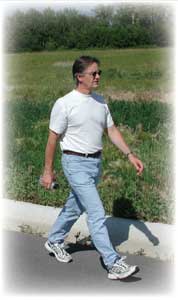
Risk Management Firefighter Fatalities
The latest wildland firefighter fatalities report "Wildland Firefighter Fatalities in the United States: 1990–2006" (NWCG 2007) indicates that aircraft accidents (23.2 percent), vehicle accidents (22.9 percent), heart attacks (21.9 percent), and burnovers (20.6 percent) were the major causes of death. Heart attacks were implicated in 29 deaths from 1990 to 1998 (3.2 fatalities per year) and 39 deaths from 1999 to 2006 (4.9 fatalities per year). According to the report, 11 fire personnel died while preparing for or taking the work capacity test. At least two of those deaths occurred during or after the walk test (1-mile walk without a pack). During 2005 and 2006 there were no reports of firefighters dying while training for or taking any of the work capacity tests. Federal agencies have implemented a medical examination program for firefighters who are required to pass the arduous test (pack test).
Volunteer firefighters are the most likely to die from heart attacks, accounting for 44 deaths or 65 percent of all firefighter heart attacks. The number of volunteer firefighters dying from heart attacks may be attributed to several factors, including the large number of volunteers involved in forest and grass fires and the lack of mandatory medical or fitness requirements in many departments. The National Fire Protection Association estimates that the United States has more than 823,000 volunteer firefighters.
A U.S. Fire Administration report (2002) on firefighter fatalities indicated that from 1990 to 2000, 47 percent of nonwildland firefighter fatalities were due to heart attack, compared to 7 percent of wildland firefighter fatalities. The report cited several reasons for the difference. Wildland firefighters are generally younger than other firefighters and have extremely high standards of physical fitness.
Risks of Exertion
Exertion does not cause heart disease and it is associated with just 10 percent of all heart attacks. The American Heart Association regards lack of physical activity as a major risk factor for heart disease, along with hypertension, elevated cholesterol, and smoking.
Atherosclerosis occurs when damage to arterial walls (from hypertension, smoking, and other causes) leads to deposition of fat and other debris in the lining of coronary arteries. Arteries may not get dangerously blocked for many years. In the general population, 93 percent of persons who die from heart attacks are 55 or older. Plaques develop in the arteries, narrowing them. Unstable plaques may rupture, causing a massive blood clot and a fatal heart attack. Early stages of atherosclerosis can be found during autopsies of teenage accident victims. The progression of the disease is related to family history (genetics) and environmental factors (diet, physical inactivity, body weight, smoking, and other factors).
Heart problems during exertion are associated with a number of risk factors, including age (over 45 years), gender (male), obesity, smoking, and inactivity. An ongoing National Institute of Occupational Safety and Health (NIOSH) study of firefighter fatalities indicates that most heart attack victims had multiple coronary risks (hypertension, high cholesterol, smoking, overweight, inactivity) and many had been diagnosed with heart disease. Some had even undergone major medical procedures such as coronary angioplasty or a coronary bypass operation.
Inactive individuals are more than 50 times as likely to experience a heart problem during exertion as those who are active. Anyone who intends to take a work capacity test or begin fitness training should become active before they begin training for the test or the job. Inactive individuals should begin a 4- to 6-week walking program, slowly increasing the distance and pace until they can walk 3 miles in 45 minutes (assuming that they are taking the pack test). Those who are older or have been inactive for very long may need to walk for longer than 4 to 6 weeks before training. See your physician or complete a health screening questionnaire before beginning vigorous activity. More information about training will be included in the forthcoming third edition of "Fitness and Work Capacity" (see the Field Notes section).
Nearly 500,000 people die from coronary artery disease in the United States each year. From 1980 to 2002 the death rates for women fell from 514 to 261 per 100,000 individuals. During the same period, the death rate for men fell from 898 to 430 per 100,000 individuals. Recent evidence shows that the death rate is no longer declining for men and may be rising in women under 45 years of age. These trends may be an early glimpse of the effect of obesity on coronary artery disease death rates (http://www.cdc.gov).

People who are older or have been inactive
for a very long time may need to
walk for longer than 4 to 6 weeks before training.

